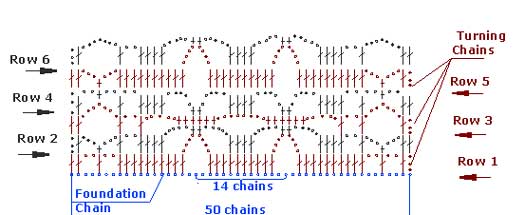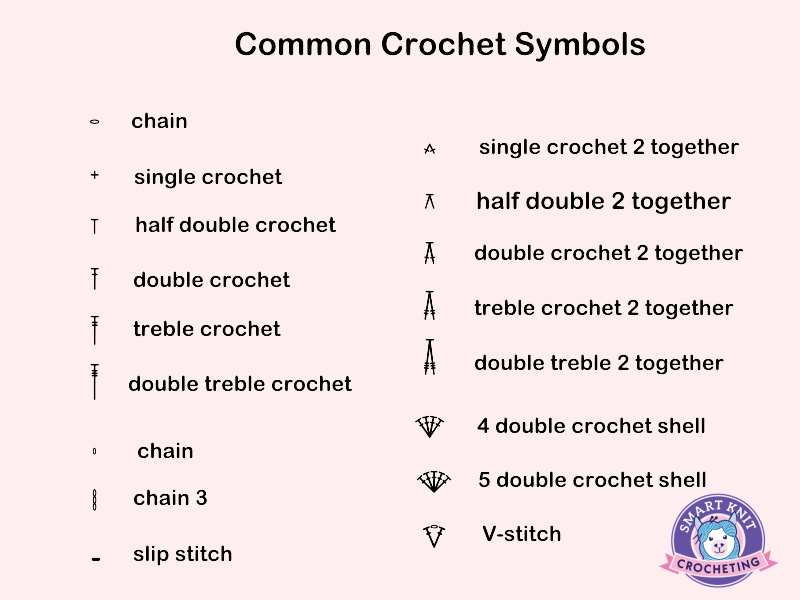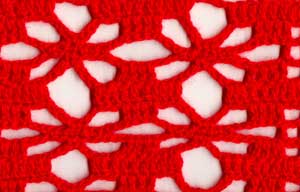 Image via Wikipedia
Image via Wikipedia
Japanese Double Crochet 3 Together Symbol
"The premise of the International Crochet Symbol is that if there is only one set of symbols for the whole world, then language does not matter, because the pattern reader need only know the symbols and then “read” the symbols in any language."
Sample Picture of Japanese Chart in The Round
JAPANESE CROCHET
Just when I thought I had crocheting down pack, I come across "Japanese Crochet". I am completely intrigued, and is for the more experienced if not adventurous crocheter. Beginning with the obvious, patterns are written in Japanese with a chart of symbols signifying the stitches. They are clear and consistent to follow, so are not all that difficult once you get the hang of it. How to Interpret Japanese Knitting and Smart Knitting Crochet both provide a good source of information to get you started on the basics.
How to read crochet patterns in charts
Smart Knitting Crochet
How to Interpret Japanese Knitting
Crochet patterns can be described either in written form or in charts. It is a matter of personal preference which method to use. Both methods have their advantages and disadvantages. We won't discuss them now. Everybody can benefit using them together. The majority of people understand things better when they can visualize them. This page is for them - visual learners.
Let's look at the pattern below. I used different colors for alternate rows to make better understanding in which row every stitch is worked. There are some general rules to follow while you are reading patterns in charts.

- Each stitch in the crochet pattern is represented by its symbol. There are three of them which were used in this chart: chain, single crochet, and double crochet. Here are a few International Crochet Symbols for your reference.

- Pattern for crocheting in rows is charted row by row. It starts from the foundation chain. Rows are usually numbered. The very first row is always the bottom one.
- As you run the work, follow the odd rows from right to left. Follow the even rows from left to right. See the chart.
- Very often a crochet pattern has a section which can be repeated as necessary for width. Repeats are indicated with a brackets below the section which needs to be repeated.
- Stitches in pattern chart are placed over the stitches in which they have to be worked.
Keeping in mind these general rules, let's read our crochet pattern.
Work a foundation chain. Length of chain is equal to 50 + 3(turning chain) chains.
Row 1: Make 1 double crochet into the fourth chain from the hook, 2 chains, skip 2 chains,1 double crochet, 2 chains, 10 double crochets, 8 chains, 10 double crochets. Follow the pattern to the end of the row. Finish with 2 double crochets.
Row 2: 3 turning chains, 1 double crochet, 3 chains, 1 single crochet into 1 double crochet of the first row, 3 chains, 1 double crochet, 2 chains, 4 double crochets into 4,5,6,and 7 double crochets of the first row, 5 chains, 2 single crochets into 4 and 5 chains of the 1 st row, 5 chains. Follow the pattern to the end of the row. Finish with 2 double crochets.
Row 3: 3 turning chains, 1 double crochet, 7 chains, 1 double crochet into 1 double crochet, 2 chains, 1 double crochet, 5 chains, 6 single crochets into the 4, 5 chains, 2 single crochets, 1,2 chains of the 2 row, 8 chains. Finish with 2 double crochets.
Row 4: 3 turning chains, 1 double crochet, 2 chains, 1 single crochet into 1 single crochet, 2 chains, 1 double crochet, 2 chains, 4 double crochets into 1,2,3 chains, 5 chains, 2 single crochets into 3 and 4 single crochets, 5 chains. Follow the pattern to the end of the row. Finish with 2 double crochets.
Row 5: 3 turning chains, 1 double crochet, 3 chains, 1 single crochet into 1 single crochet, 3 chains, 10 double crochet, 8 chains, 10 double crochets. Follow the pattern to the end of the row. Finish with 2 double crochets.
Row 6: 3 turning chains, 1 double crochet, 8 chains, 1 double crochet into 1st double crochet, 2 chains, 4 double crochet into 4,5,6,7 double crochets, 5 chains, 2 single crochet into 4 and 5 chains, 5 chains. Follow the pattern to the end of the row. Finish with 2 double crochets.

Here is the result.
Now you have an idea about the rules crochet patterns can be described in charts. It will help you to save time while you are working on your projects. It doesn't really matter whether you are going to use written instructions or charts. The most important is your enjoyment from what you are doing. Be creative.
You do not necessarily need to have complex crochet patterns to make your project. In most cases a real masterpiece is made with simple techniques, good taste, and basic crochet pattern.
Web sites Resources for the Adventurous Knitter
www.tata-tatao.to/knit/e-home.html
ABC's of Knitting, is a Japanese website on knitting, with some sections in English. This is the most highly regarded source of information for English knitters wanting to learn about Japanese knitting techniques.
www.clearwaterknits.com/charting/lesson1.html
Clearwater Knits has a detailed description of reading Japanese knitting charts for machine knitters, and much of the information is also useful for hand knitters.
www.kanzawa.com
Hand knit & handcraft Kanazawa This web site is all in Japanese, and shows many of the Japanese yarns that are available.
www.knitjapan.co.uk
Knit Japan features photos with written essays from the work of many Japanese knitters from 'Fushiginoiroito' who were at the Knitting & Stitching Show in the UK, as part of the Japan 2001 Festival. Also includes 2 essays on the History of Knitting in Japan.
www.knittingelegance.blogspot.com
Knitting Elegance Blog is a great resource for knitters who are working on patterns from the Japanese knitting book series "Let's Knit". Also has links to other resources.
www.groups.yahoo.com/group/knittinginjapan
Knitting in Japan is a Yahoo Group that discuss resources, current projects of Japanese knitting patterns, discussions on how to work different Japanese knitting symbols, plus knit-a-longs and so much more.
www.kinverknits.com
Maureen Mason-Jamieson is a knitting designer/teacher who has taught her popular workshop Japanese Knitting Techniques (plus several other topics) at Stitches events and several guilds. Visit her web site to check out her current teaching schedule, and for contact information if your guild or LYS would like to learn more about Japanese knitting techniques.
Also of great use is Google's translation tools – you can input a web site address too.
www.google.com/language_tools
Note that translations can be a bit difficult to read, but you can often learn quite a bit from them.
Related articles
- FREE CROCHET PATTERN :: Xian Knit Kimono Jacket (manyhorsesmane.wordpress.com)
- Review of The Complete Idiot's Guide to Amigurumi (craftingagreenworld.com)
















